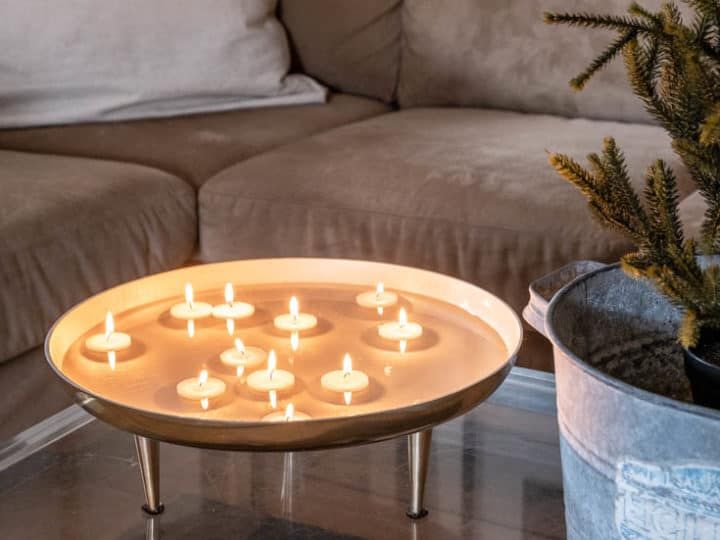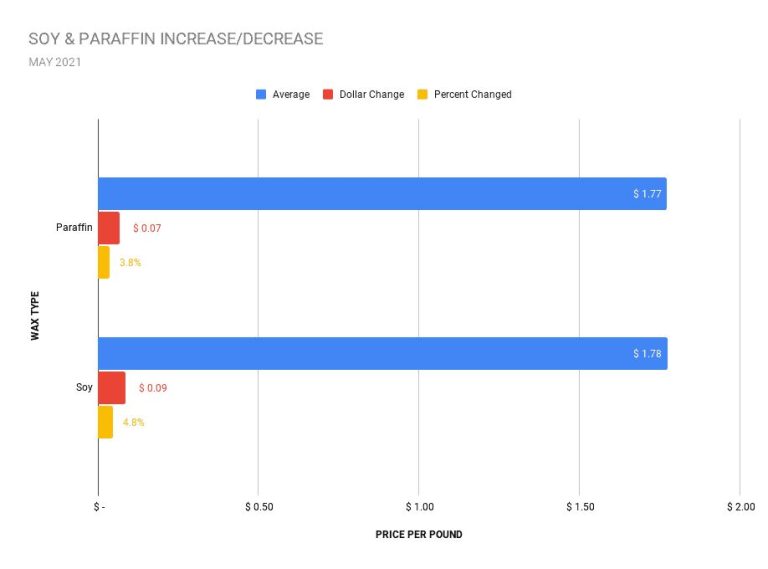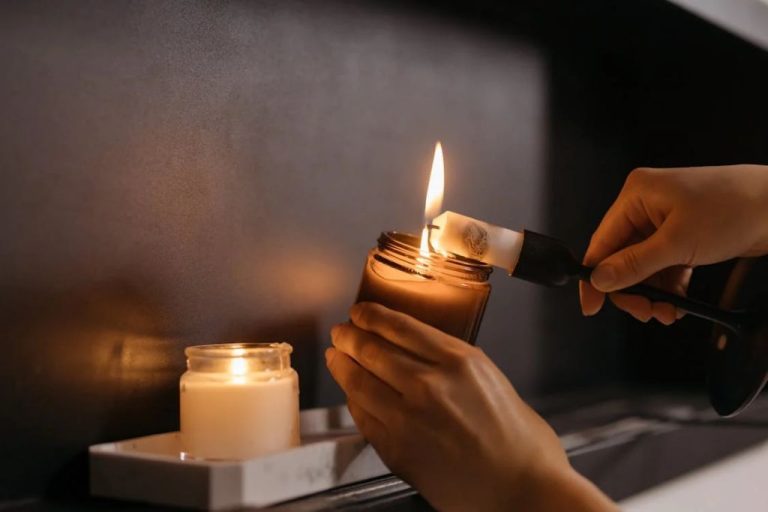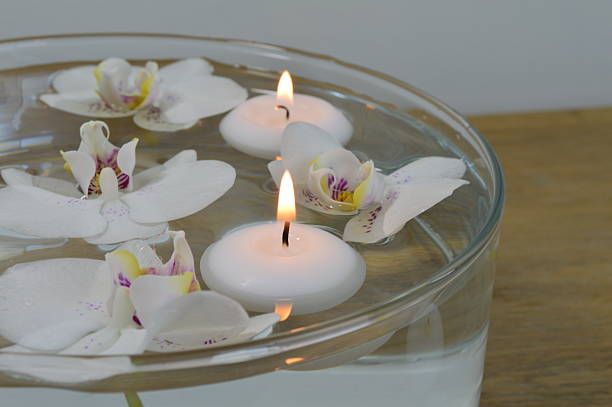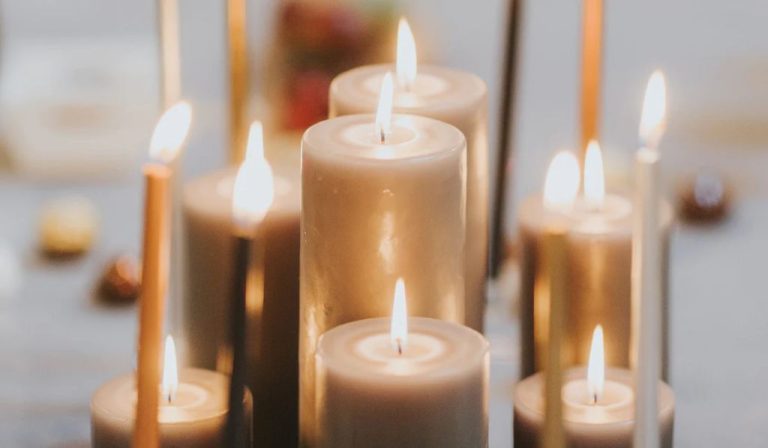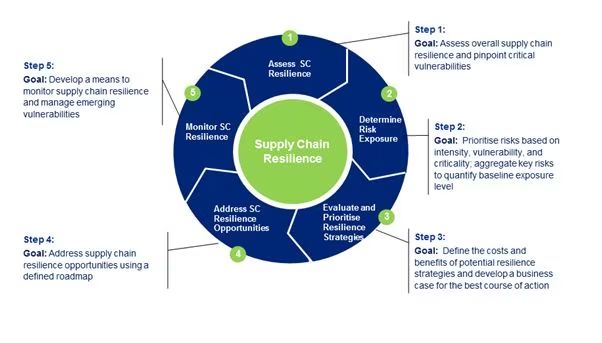Can Any Candle Be A Floating Candle?
What Are Floating Candles?
Floating candles are candles designed to float on water. They consist of a candle enclosed in a container, usually made of glass, that is specially shaped and weighted to float upright when placed in water. The candle burns inside the container, providing a flickering flame that appears to magically float on the water’s surface.
Floating candles come in a variety of shapes and sizes, from small tea lights to large pillars over 10 inches tall. The containers are often decorative, featuring beautiful colors, textures, and designs. Glass containers allow the candle light to shine through and reflect on the surrounding water for dramatic effect.
These specialized candles create a tranquil ambiance perfect for spas, ceremonies, and special occasions. The glowing flames hovering over a pool, fountain, or bowl make for an eye-catching centerpiece or decorative accent. Floating candles can be used indoors or outdoors to set the right mood.
The Science Behind How Floating Candles Work
Floating candles are able to “float” on water due to some clever physics and design. The key is that the floating disc or base that the candle sits on is made of a material that is less dense than water, such as wax or plastic. Since these materials are less dense than water, they float. The disc displaces a certain volume of water based on its size and shape. The weight of the water displaced by the floating disc is greater than the weight of the disc itself, allowing it to float on the surface.
The candle that sits atop the floating disc has a wick like a normal candle. When the wick is lit, the candle begins to melt and the melted wax is absorbed into the wick, fueling the flame. Even as the candle burns down, the floating disc continues providing buoyancy to keep the candle floating on the water’s surface. The melted wax pools in the disc beneath the burning candle. Once the candle has burned down completely, the remaining wax left in the disc can be scraped out and removed.
Some key physics principles that allow floating candles to work:
- Buoyancy – Less dense materials float on denser materials like water
- Displacement – The floating disc displaces a volume of water equal to the disc’s volume
- Density – The disc material is less dense than water
- Wick – Absorbs melted wax to fuel the flame as the candle burns
With the right balance of buoyancy from the floating base and a standard wick, the floating disc can keep a candle burning while floating on the water.
Choosing the Right Container for a Floating Candle
When selecting a container for a floating candle, there are a few key factors to consider regarding the material, shape and size.
The most common materials used for floating candle containers are glass, acrylic, plastic, and metal. Glass containers like vases and hurricanes are popular for their elegant, transparent look that highlights the candle. Acrylic also provides a clear view of the candle but is more shatterproof. Plastic and metal tend to be more budget-friendly options.
The shape of the container depends on the look you’re going for. Tall cylinder vases showcase pillar candles, while short, wide bowls work well for tealight or votive candles. Consider rounded shapes like hurricanes for a smooth finish or angular containers for a more geometric style.
When deciding on size, make sure the container is large enough to allow at least 1-2 inches of clearance between the top of the candle and the opening of the container to prevent potential fire hazards. The container should also be heavy enough that the candle doesn’t tip it over.
Testing different container options with the actual candles you’ll be using is the best way to ensure they are appropriate vessels for floating candles. The right container complements the candle and creates an enticing floating candle design.
Picking the Right Candle for Floating
When choosing candles for floating, you’ll want to consider certain characteristics that make them suitable for water.
The most important factor is finding candles that are designed specifically for floating. Look for candles labeled as “floating candles” or “pool candles” from candle makers. These candles are formulated with special waxes that help them float and resist melting in water.
Paraffin wax is commonly used for floating candles, as it’s dense enough to keep the candle afloat. Beeswax can also work well. Avoid candles made from soy, coconut, or palm wax, as these natural waxes are too soft and will quickly sink and dissolve in water.
Opt for wider container candles or large pillar candles over taper candles. The greater surface area underneath will make the candle more buoyant. Vessels that are 4 inches or wider generally float better than narrow tapers.
Pillar candles with a single centered wick work best, as multiple wicks can throw off balance. The wick should be trimmed to 1⁄4 inch before floating to reduce excess smoke and promote steadier burning.
Also consider candles with dyes that hold their color and fragrance oils that retain their scent when pooled in water. Test out a short float to ensure the candle performs as desired.
With the right floating candle design from a reputable maker, almost any candle can be turned into a gorgeous floating decoration. But specialized floating candles ensure the best results in terms of performance, beauty, and safety.[1]
Making Your Own Floating Candles
Making your own floating candles at home is a fun DIY project that allows you to customize your floating candles exactly how you want. Here are some tips for making your own floating candles:
You’ll need candle wax, candle wicks, candle dye and fragrance if desired, a pouring pot, and a container to float your candle in. Glass containers like vases, bowls, and jars work well. Make sure your container is heat-safe if using real candles. For flameless floating candles, any container will do.
Melt your candle wax in the pouring pot and add dye and fragrance as desired. Let the wax cool slightly so it’s not too hot. Carefully pour a small layer of wax into your floating container, just enough to adhere the wick when centered. Let that wax layer cool.
Now pour additional wax into the container about 1/4 full. Hold your wick centered in place until the wax cools again. Repeat pouring more wax and holding the wick until your candle fills the container. Make sure to leave room at the top for the wick and melting wax.
Once your candle is poured and cooled completely, you can decorate it with flowers, glitter, beads, or other embellishments. Float your finished candle in water or another liquid filler inside a larger container or bowl.
For more detailed instructions and tips, check out this guide from CandleScience: https://www.candlescience.com/learning/how-to-make-floating-candles/
Decorating Floating Candles
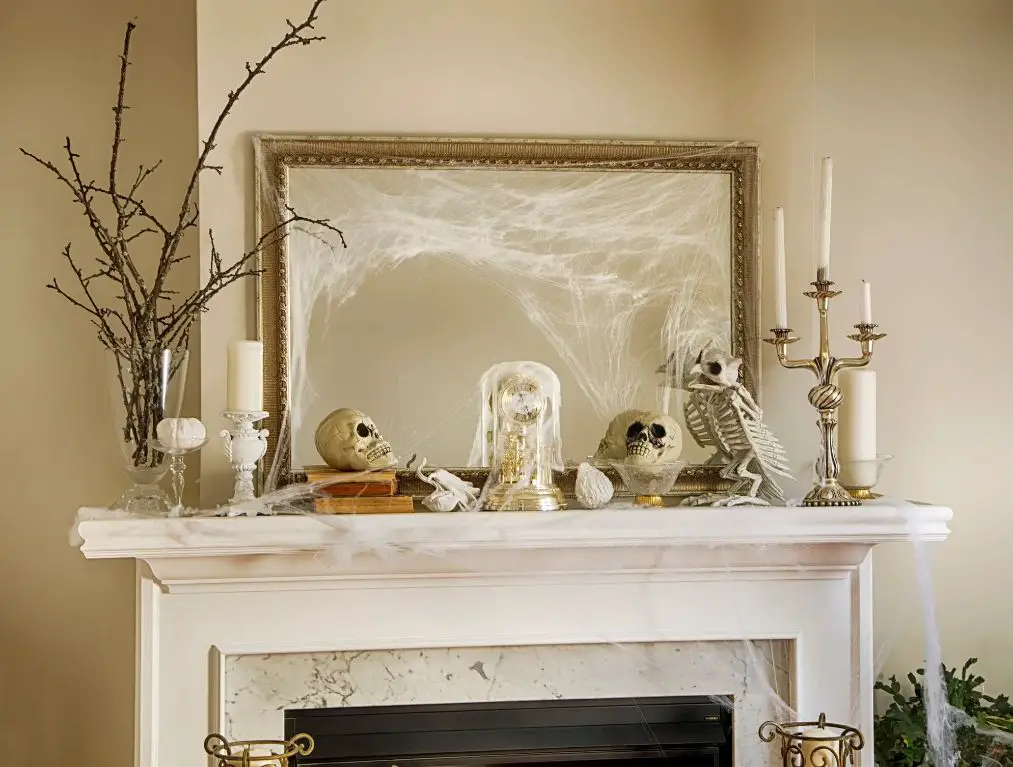
Float extravaganza floating candle centerpieces floating pinecones tea light candleholder with flowers floating candles flowers floating candle centerpieces floating pinecones candle flower centerpiece floating candle centerpieces daylights with, floating candles tea light candleholder with flowers floating pinecones flower centerpiece floating candle floating candles centerpieces daylights with flowers pinecones.
Some popular decorating ideas for floating candles include:
- Adding fresh flowers like roses, daisies, baby’s breath
- Using foliage like pinecones, leaves, vines
- Sprinkling glitter, confetti, or sequins on the water’s surface
- Placing beads, marbles, or glass crystals in the water
- Using ribbon, raffia, lace to embellish the container’s edge
- Painting or etching glass containers for a unique look
The decorating options are endless! Let your creativity shine by personalizing floating candles for any occasion or season.
Using Floating Candles Safely
Floating candles can create beautiful ambiance, but it’s important to use them safely. Here are some key safety tips when using floating candles:
Supervise at All Times
Never leave floating candles unattended. Always make sure an adult is supervising to prevent fires or accidents.
Use Nonflammable Containers
Choose nonflammable containers like glass or metal bowls. Avoid using plastic containers which can melt from the heat.
Keep Away From Edges
Position floating candles away from pool edges, balconies or anywhere they could get knocked over and cause a fire hazard.
Extinguish Before Moving
Always extinguish floating candles before moving them to prevent spills and fires. Don’t move them while lit.
Avoid Drafts
Don’t use floating candles in drafty areas. This can make them tip over easily and increase fire risks.
Use the Right Candles
Opt for short, wide candles designed for floating. Tall, narrow candles are more prone to tipping over.
Don’t Overload Containers
Don’t overload floating candle containers with too many candles. This can cause them to tip and increases fire hazards.
Keep Away From Children
Keep floating candles out of reach of children and pets to prevent knock overs and injuries.
Fun Floating Candle Ideas
Floating candles can add a magical ambiance to any event or occasion. Here are some unique ways to use floating candles to make your decor extra special:
For a romantic dinner, float tealight candles in glass bowls filled with water. Scatter rose petals around the candles for an elegant touch. The flickering candlelight will create a beautiful, intimate setting. (Source: https://www.pinterest.com/pin/463631089804886987/)
At a wedding reception, place floating candles in tiered glass vases on each table for a glamorous look. Mix floating and regular candles for variety. The floating candles will make a striking centerpiece. (Source: https://www.pinterest.com/pin/AU9b5pA-v___EOJZqJL2A9V9u20e7U3wUUitVWHy9cAbBzoTm46jcS8/)
For Halloween, place floating candles in carved out pumpkins or cauldrons filled with water. The spooky ambiance is perfect for a Halloween party. Get creative with creepy decorations like spiderwebs to enhance the theme. (Source: https://www.pinterest.com/pin/29844262047886927/)
During Christmas, arrange floating candles on a garland-draped table or mantelpiece for a festive glow. The candles will complement the evergreen garlands and ornaments. For outdoor decor, float candles in glass jars lining a pathway. (Source: https://www.pinterest.com/pin/27776490380592719/)
Let your creativity shine by coming up with your own unique floating candle designs. The possibilities are endless!
Common Floating Candle FAQs
Many people have questions about how floating candles work and how to use them properly. Here are answers to some of the most frequently asked questions about floating candles:
How do floating candles work?
Floating candles have a special wax formulation that is less dense than water. This allows the candle to float when placed in water. The wick and flame remain above the water line, allowing the candle to burn while floating (Source).
Can any candle be a floating candle?
No, regular candles cannot float because they are too dense. Only candles made specifically as floating candles, with wax engineered to float, will work (Source).
How long do floating candles burn?
Floating candles generally burn for 5-6 hours. The burn time depends on the size of the candle. Larger floating candles will burn longer than smaller ones (Source).
Are floating candles safe?
Yes, floating candles are safe if used properly by keeping them away from flammable materials and not leaving them unattended. The same fire safety rules apply as with regular candles.
What containers work best for floating candles?
Wide, flat containers like bowls, trays, and vases work best to provide stability for floating candles. Containers should be filled with at least 1-2 inches of water. The candles should have ample room to float freely.
Why Consider Floating Candles
Floating candles offer a number of unique benefits and advantages over traditional candles.
One of the main reasons to consider floating candles is their beautiful, mesmerizing flame. By floating on water, the flame is softly reflected on the water’s surface, creating a tranquil ambiance. This makes floating candles ideal for relaxation spaces, spas, or anywhere a sense of serenity is desired.1
Floating candles are also safer than standard candles, as the water they float in acts as a fire barrier. This allows them to burn for hours without risk of fire. Their self-extinguishing wicks also prevent the flame from spreading if tipped over accidentally.2
In terms of decoration, floating candles offer unique design possibilities. Their reflection on water allows for creative arrangements and visual effects. They work well grouped together in clusters or pools or used individually in vases or bowls. Their small size makes them versatile for both large and small spaces.1
Overall, floating candles create an elegant ambiance and visual appeal while also providing practical safety benefits. For those seeking a unique, mesmerizing candle experience, floating candles are an excellent option to consider.

